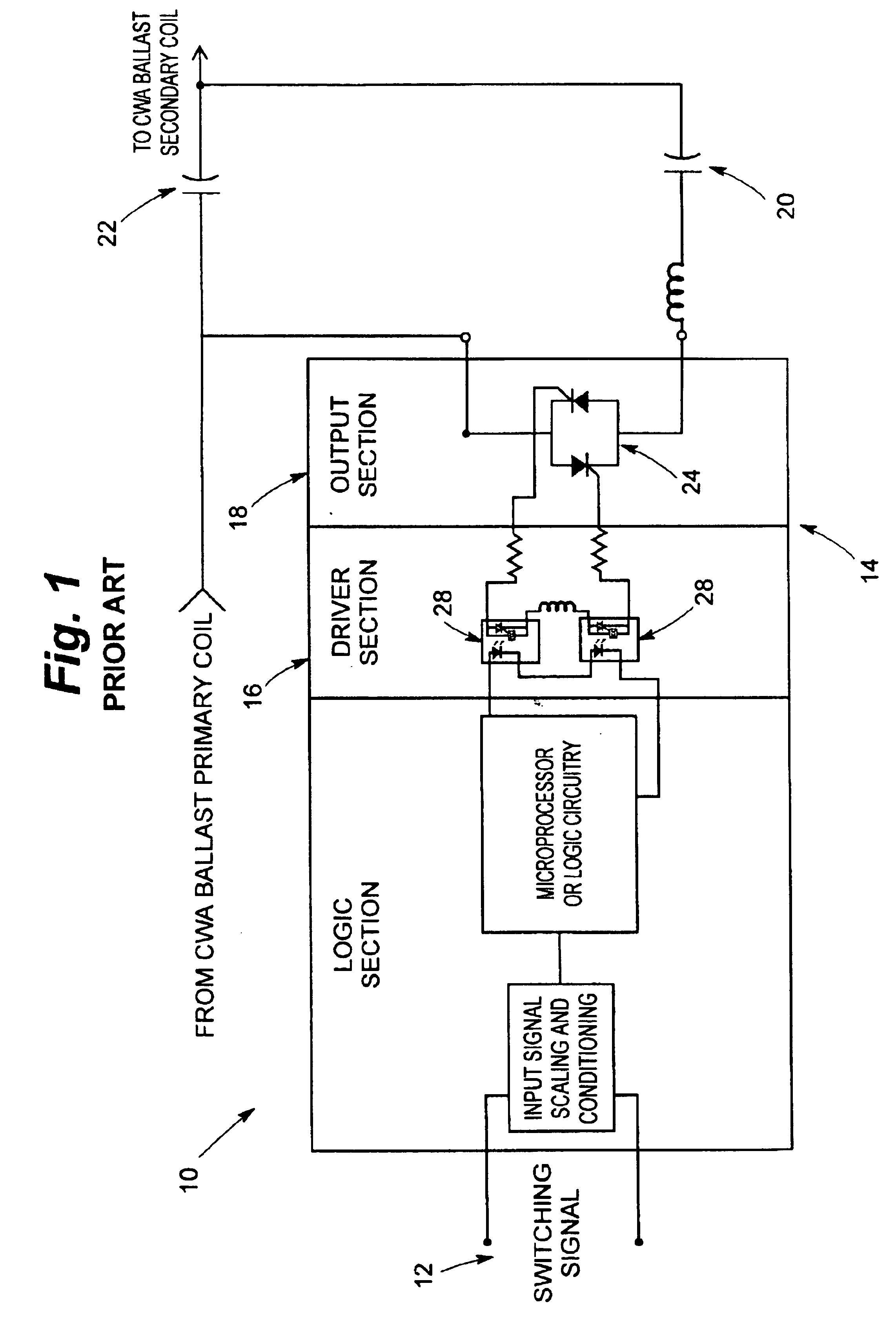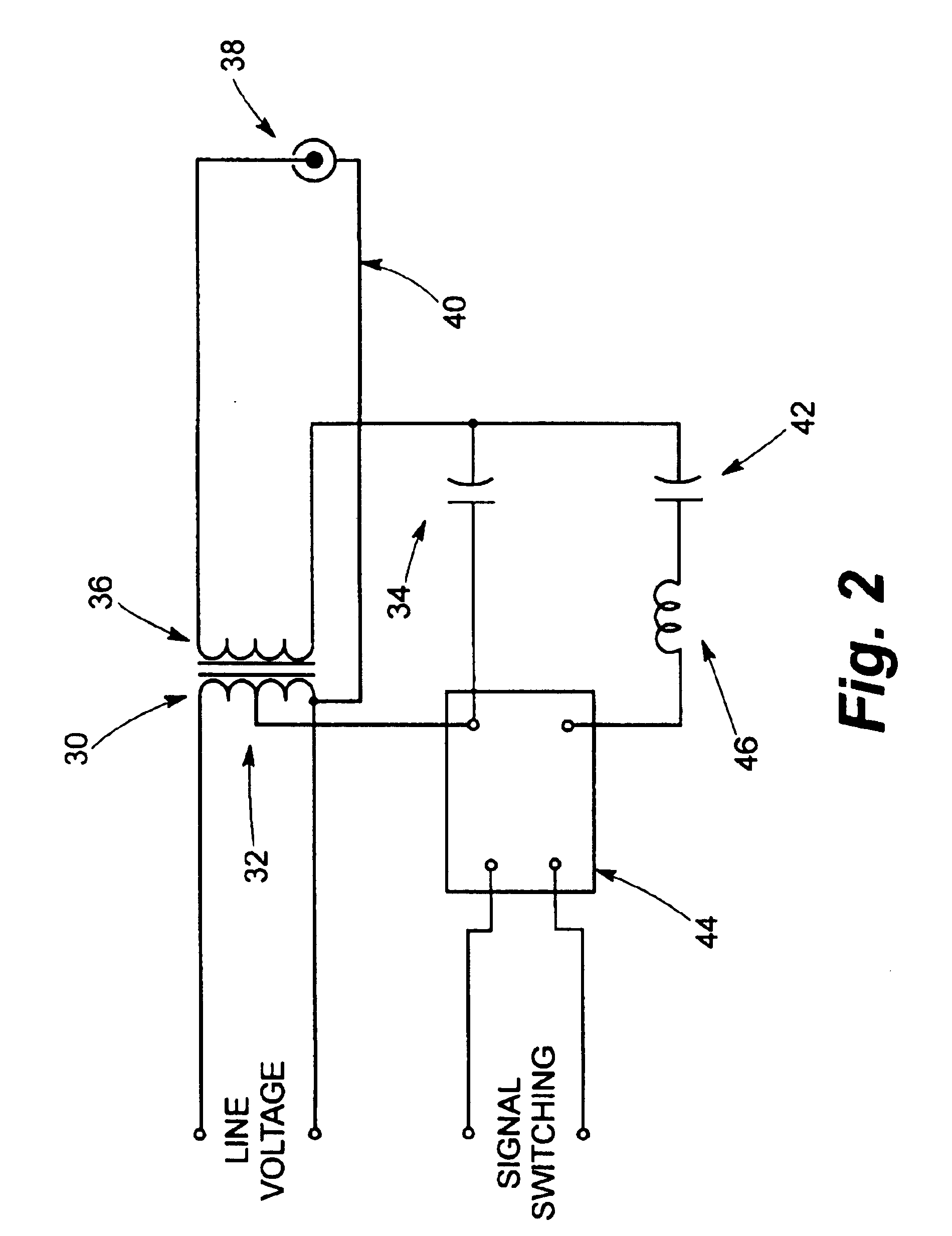Method and apparatus for switching of parallel capacitors in an HID bi-level dimming system using voltage suppression
a technology of voltage suppression and parallel capacitors, applied in the direction of basic electric elements, instruments, light sources, etc., can solve the problems of limiting the use of such switches, unable to provide an inexpensive solution to the switching function, and expensive custom relays that are configurable only at unacceptable cost levels, so as to achieve accurate clamping voltage, prevent overheating, and reduce the peak voltage
- Summary
- Abstract
- Description
- Claims
- Application Information
AI Technical Summary
Benefits of technology
Problems solved by technology
Method used
Image
Examples
Embodiment Construction
The disclosures of U.S. Pat. Nos. 4,931,701; 5,217,048; 5,811,939 and 6,031,340 are incorporated hereinto by reference.
Referring now to the drawings and particularly to FIG. 1, a conventional switching circuit is seen at 10 to be operable from a switching signal supplied at 12 for control of a bi-level dimming system (partially shown in FIG. 1) utilizing high intensity discharge lamping (not shown in FIG. 1). The circuit 10 comprises an electronic relay seen generally at 14 to have a driver section 16 and an output section 18. The electronic relay 14 essentially takes the form of a conventional electronic switch. In the circuit 10, a capacitor 20 is switched in and out of parallel with a capacitor 22. The output section 18 of the electronic relay provides this switching function. In operation, a maximum peak voltage rating must be in excess of the combined peak voltage of the capacitors 20, 22. The parallel capacitors 20, 22 in prior art systems are switched on conventional CWA or c...
PUM
 Login to View More
Login to View More Abstract
Description
Claims
Application Information
 Login to View More
Login to View More - R&D
- Intellectual Property
- Life Sciences
- Materials
- Tech Scout
- Unparalleled Data Quality
- Higher Quality Content
- 60% Fewer Hallucinations
Browse by: Latest US Patents, China's latest patents, Technical Efficacy Thesaurus, Application Domain, Technology Topic, Popular Technical Reports.
© 2025 PatSnap. All rights reserved.Legal|Privacy policy|Modern Slavery Act Transparency Statement|Sitemap|About US| Contact US: help@patsnap.com



